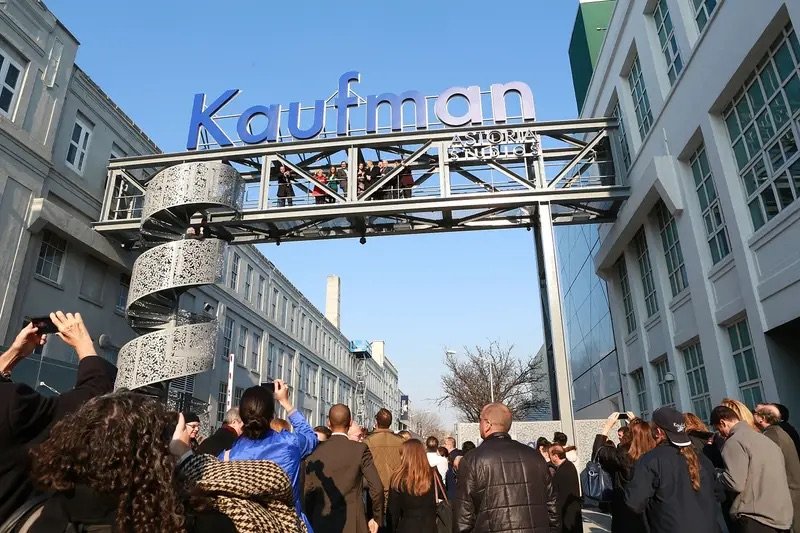New York’s Production Boom: Tax Incentives, New Studios, and the Changing Film Landscape
Wildflower Studios
New York State is pulling out all the stops to reinvigorate its film and TV production industry. Governor Kathy Hochul has unveiled a series of enhancements to the state’s already generous tax incentives, aiming to counteract a decline in production spending and compete with rival regions like New Jersey, California, and British Columbia. Alongside this, the state is witnessing a surge in soundstage construction and production facilities, solidifying its position as a hub for both big-budget blockbusters and independent filmmaking.
Tax Incentives at the Core
The proposed changes include a $100 million fund exclusively for independent films and a 10% bonus on the existing 30% base credit for companies producing three or more major projects in New York. These adjustments come as production spending in the state is projected to drop 15% since 2019, with applications for tax credits down 53% over the same period.
To address bureaucratic delays, Hochul’s plan eliminates the staggered allocation of tax credits, ensuring productions receive their full credit in the first year of allocation. This move is expected to attract both large-scale and smaller independent projects, which often struggle with cash flow.
New York’s Competitive Edge
Sunset Studios Pier 94 - Gensler
The enhancements are vital as New York faces stiff competition. Neighboring New Jersey offers a 39% incentive for qualifying productions, while California and British Columbia have expanded their credits to $750 million and CA$1.2 billion, respectively.
“The governor’s proposal to enhance the production incentive program will further our industry’s track record of creating union jobs, establishing talent pipelines, and supporting small businesses,” said the Motion Picture Association (MPA). However, critics, such as State Sen. James Skoufis, highlight concerns about the program’s economic efficiency, citing a 2023 state audit showing it generates just 31 cents in tax revenue for every dollar invested.
A Studio Construction Boom
Lionsgate Studios Yonkers
Fueling optimism for New York’s production future is the unprecedented surge in studio construction. From Manhattan to Yonkers, the state is seeing a proliferation of soundstages and production spaces designed to meet the growing demand for state-of-the-art facilities.
Wildflower Studios in Queens, spearheaded by Robert De Niro, is set to open its $600 million vertically built facility next summer, boasting 11 soundstages totaling 198,000 square feet.
Lionsgate Studios Yonkers opened in early 2022, while Lionsgate Newark Studios, a $200 million facility, is under construction and set to open by 2025.
Manhattan’s Sunset Pier 94 Studios, a $350 million project with six soundstages, will be the city’s first purpose-built studio campus when it opens in late 2025.
East End Studios Sunnyside Campus in Queens, costing $280 million, will add four stages by early 2025.
Smaller projects, like Great Point Studios Buffalo and cutting-edge LED volume stages like those at Chelsea Television Studios, further diversify the offerings.
Major Studios in New York City
Kaufman Astoria Studios
New York’s established studios are also expanding to meet demand:
Kaufman Astoria Studios: The historic Queens studio is building New York City’s first outdoor lot, allowing productions to film exteriors and car chases in a controlled environment.
Silvercup Studios: The Queens facility, running at full capacity, houses shows like The Good Wife and Elementary.
Steiner Studios: Located in the Brooklyn Navy Yard, Steiner boasts the largest stage on the East Coast at 27,000 square feet and is expanding with a $600 million facility, Steiner Sequel, set for completion by 2027.
Broadway Stages: Known for its environmentally conscious approach, including a fully operational rooftop organic garden, Broadway Stages has become a favorite for productions like Blue Bloods and The Good Wife.
Technological Advancements
Carstage
New York’s studios are embracing cutting-edge technology to attract productions. LED volume stages, used in shows like The Mandalorian, are becoming a standard offering. For example:
Carstage in Queens specializes in creating immersive moving car window scenes.
For new feature film Daddio, Disguise’s virtual production workflow helped producer, writer and director Christy Hall captivate audiences for 101 minutes with only two characters.
XR New York, just north of the city, offers a 45-foot curved LED wall for dynamic shooting.
Chelsea Television Studios now houses a high-tech LED volume stage ideal for both automotive and non-automotive shoots.
POPULAR ON THE CINEMA GROUP
Challenges Ahead
Despite the boom, challenges remain. Rising interest rates and the scaling back of streamer content orders could stall some projects. Several planned facilities, such as Panorama Brooklyn Studios, are still finalizing funding. Additionally, global competition from locations like Canada, the UK, and even Spain remains fierce.
Economic and Creative Impact
The enhancements to New York’s film incentives and the explosion of studio construction promise to provide a significant boost to the state’s economy. The Motion Picture Association estimates that major motion pictures contribute $1.3 million to local economies daily, while TV series add $475,000.
Governor Hochul’s proposals aim to cement New York’s reputation as a top-tier production hub. While some lawmakers question the long-term benefits, industry leaders see these efforts as essential for retaining talent and attracting world-class productions.
With its storied history, cutting-edge facilities, and expanded incentives, New York is poised to reclaim its standing as a global leader in film and TV production. The coming years will determine if this resurgence can be sustained, but for now, the Empire State is rolling out the red carpet for the entertainment industry.
THE CINEMA GROUP - YOUR PREMIER SOURCE FOR THE LATEST IN FILM AND ENTERTAINMENT NEWS. FOLLOW US ON SOCIAL MEDIA @THECINEMAGROUP












